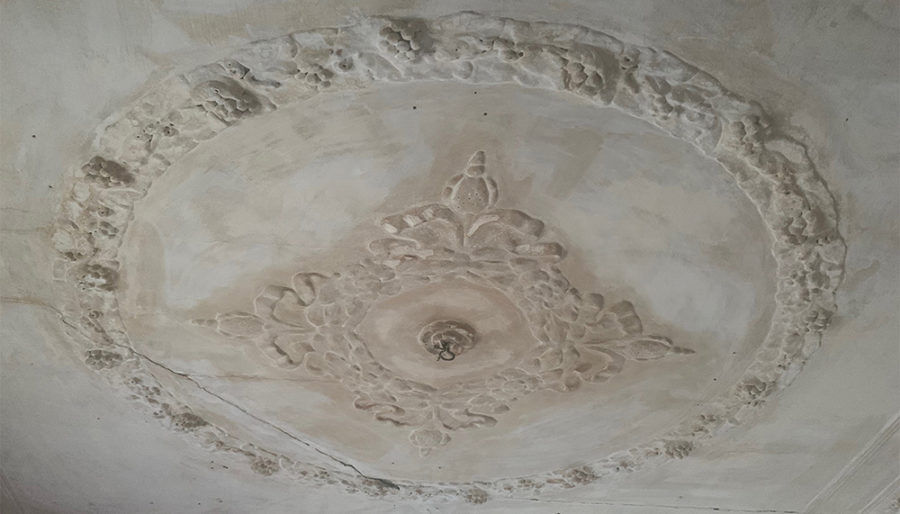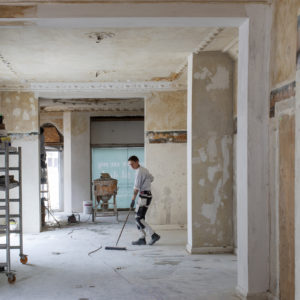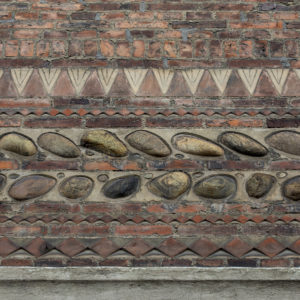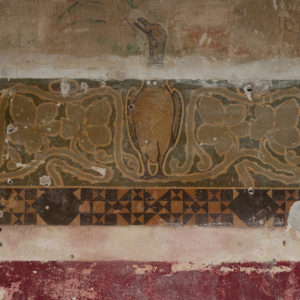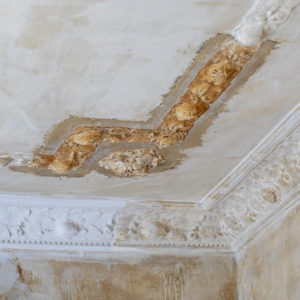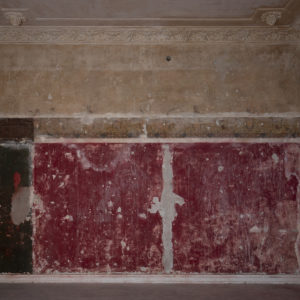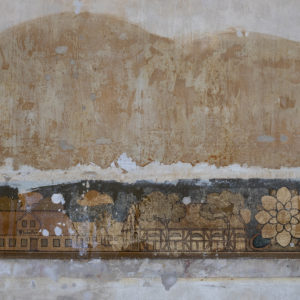This website uses cookies so that we can provide you with the best user experience possible. Cookie information is stored in your browser and performs functions such as recognising you when you return to our website and helping our team to understand which sections of the website you find most interesting and useful.

Traditional Craftsmanship Is Durable
29 June 2021
Old materials and techniques are in focus in the construction company Byggeselskabet C.F. Hansen that primarily works with listed and preservation-worthy houses. In this interview, master mason Max Kejser Mortensen talks about his predilection for his profession and why the old crafts stay the course.
The enthusiasm in Max Kejser Mortensen’s voice is unmistakable. He is passionate about his work. Together with his father and eight other colleagues, he runs the construction company Byggeselskabet C.F. Hansen, which is a company of passionate craftsmen who have combined their love of the classic crafts with new and innovative thinking.
“I am a big fan of the Danish architect C.F. Hansen (1756-1845), after whom our company is named, and believe that we should return to the restoration and building principles of the past.”
“This would generate a range of buildings that can last for many years to come, and in this way we can help take care of the cultural heritage,” says Max Kejser Mortensen.
70-80 % of the buildings, which Byggeselskabet C.F. Hansen is restoring, are protected and preservation-worthy, and the name of the company reveals that quality craftsmanship in this type of buildings is precisely its key competency as C.F. Hansen (1756-1845) was one of Denmark’s great architects in the 19th century. His buildings symbolise the innovation and cultural heritage of the time, and Byggeselskabet C.F. Hansen adds both quality and environmental awareness to this tradition.
Vibensgaard – a Time Warp
This also applies to the project that Max Kejser Mortensen is currently working on for Elgaard Architecture. In the classic property Vibensgaard on Østerbro in Copenhagen, Byggeselskabet C.F. Hansen is restoring the masonry on the ground floor of Anton Rosen’s (1859-1928) historic and listed building from 1903-05. Rosen was one of Denmark’s few, great architects of the Art Nouveau movement in the late 1800s and early 1900s, and he designed many buildings around Denmark.
It is like entering an old, bygone Copenhagen to visit the ground floor shop premises, after BabySam has left its usual surroundings for a while. Behind several layers of wall cladding and suspended ceilings, a true treasure from the past appeared when the owner of the store tore these down to rebuild the shop’s interior. The original wall decorations in the shape of various friezes as well as stucco ceilings from the beginning of the 20th century, when the five adjoining rooms were restaurant rooms as indicated on Anton Rosen’s original drawings of the house, suddenly reappeared! They had been hidden from view for many years.
Elgaard Architecture is a consulting architect on the project, which also involves the Agency for Culture and Palaces as the property is listed. In addition to the many original details in the five rooms themselves, the craftsmen also found the original windows in the basement underneath the house. These could be moved up and down, so that the front part of the restaurant could be opened up towards the street. That was a very modern invention at the time of the construction of the house.

Back To the Future
Over time, however, not all approaches to the restoration of the house have been equally fortunate. “The restaurant premises have previously been restored with unorthodox methods and materials such as the wrong mortar, etc,” says Max Kejser Mortensen. “This is now being rectified with the right mixture of lime putty plaster. This means that any skew that may be on the walls is corrected and leveled, so that the friezes that run on the walls in most of the rooms can be preserved and also recreated in the places in which it is missing.”
It is important that the plastered surface in the frieze decorations is precise and appears in one plane, so that damaged decorations can be recreated without a difference in level in the surface. The metre-long, unique frieze band shows old, historic roadside inns that were once located along Strandvejen just north of Copenhagen, mixed with varying landscapes and trees. The frieze is intact in some places, in others not, but it generally needs conservation after having been covered with wallpaper of various materials such as hessian, which back in time was removed again and therefore took parts of the plaster with it.
Therefore, conservator Anne Brøndum Torp has been involved in the process by the Agency for Culture and Palaces to help save the original decorations. “In Vibensgaard, my collaboration with the conservator has been really positive,” says Max. “I have read the entire conservation report thoroughly and have met with Anne many times to talk about the approach and the result. This means that in collaboration we can achieve the best result on behalf of the building.”
In terms of preserving the cultural values of the house, the old fabric of straw in the walls and ceilings is also being intertwined with new in the places in which it is lacking. In this way, the old materials are preserved, while the new ones at the same time correspond with the original ones.
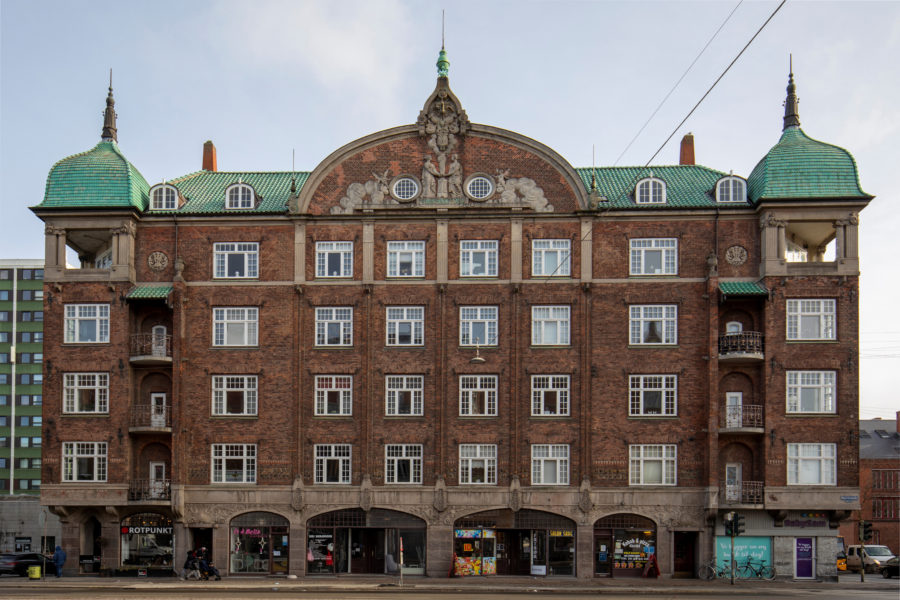
New and Old Plaster
The trick is to get the old plaster on among others the friezes to interact with the new, and although the chosen solution may be more expensive for the client, it is in turn made completely in accordance with the rules of the conservation authorities, which is a prerequisite for the project. In general, the cheapest material is by no means always the best, but in the long run it still ends up being cheaper when you build in the correct manner, because the houses last longer.
“The biggest challenge so far has probably been to adapt the old plaster with the new one, so it binds properly,” explains Max Kejser Mortensen. “The plasterer had to put a whole series of screws up in the ceiling, so he could cast an in situ mold around the plaster rosettes, which can then be held in place in that way. One of them fell down at first,” he explains.
Materiality
Max is clearly enthusiastic about old materials and craft techniques – some of his and Byggeselskabet C.F. Hansen’s forces.
“For me, proper knowledge about materials is crucial when you, like us, restore according to old principles,” says Max. “Our apprentices are attending an intensive restoration course that lasts six months, so they are introduced to everything from architectural styles and history to colour theory and much more. This means that they can live up to a certain standard in their future work with restoration projects”. Max Kejser Mortensen teaches lime mortar himself at Roskilde Technical School and therefore has in-depth knowledge of mixing different types of mortars in the old way.
But why are the old materials the best? “They are the best, because they are ‘open’ and natural and breathe better,” explains Max, adding that we naturally have centuries of experience with them and therefore know how they perform. “It is crucial that the right materials are used to restore historic buildings,” he continues. “A material such as lime mortar means, among others, that the buildings can move and “work”. Cement mortar, on the other hand, contributes to the accumulation of moisture in the masonry.”
“We mix all materials from scratch and according to old principles, which is both much cheaper and allows us to make the exact composition and colour of the original mortar,” he continues.
A mock-up is often prepared from which the client can then choose materials, etc. This makes the projects much more concrete and also means that the client can see what he gets out of the individual approaches, and, additionally, that all parties fully agree on the process before the project commences.
Young Craftsman in Old Trade
Max is 31 years old and is still building his network in the industry. “I love cultural history and philosophy, but it was the craftmanship I returned to after some time in the military and at the University of Copenhagen,” he says. “Crafts combine many different forms of knowledge which appeals strongly to me,” he continues.
Max has an unusual background for a craftsman and has twice been in Afghanistan with the Danish military, and he has, in addition, almost completed a Bachelor’s Degree in theology at the University of Copenhagen. He has also been a travelling craftsman on a freelance basis, an old tradition that Scandinavian craftsmen established in the 1800s and 1900s.
Verona in Italy is one of the places that Max Kejser Mortensen has visited as a travelling craftsman, and there he learned the stucco lustro technique, which dates back to Antiquity. It is a plastering technique where a plastered, marbled surface is created on walls, which when polished can easily be taken for real marble. Stucco lustro is a mixture of slaked lime and crushed marble grains, which is applied in several layers and pressed with a tool so that it forms a smooth glossy surface – a polished plaster. As a base material, the marble plaster is white, but it can be dyed with calcareous pigments. You can also apply new expressions to it by for instance adding powdered brick, crushed coloured marble, black grains of sand or crushed oyster shells.
Advice Is Important
For Elgaard Architecture, it is important that both the client’s and the house’s needs are met and balanced when we undertake a restoration task. We call this the “double bottom line”. Max knows all about this issue, because he is often involved in advising on materials and options in the houses with which Byggeselskabet C.F. Hansen works.
“For me, it is extremely important to be part of the counseling process and give thorough feedback,” Max continues. “I have this profession because I am passionate about it. Otherwise, I might as well not have this job.”
Commitment is crucial for Max Kejser Mortensen, who spends a lot of time researching the individual tasks he works with. He is in dialogue with the client and the architect/adviser on an ongoing basis and is often asked for his opinion by the client in relation to the projects. “It is important for me to get those involved to understand the process and thus take responsibility for the process,” Max adds. “It’s actually the best thing about my job,” he concludes.
Thus, Vibensgaard and Anton Rosen’s visions are so far in good hands, and the property is now awaiting further decisions about the future of the old restaurant rooms from the conservation authorities and the client.
